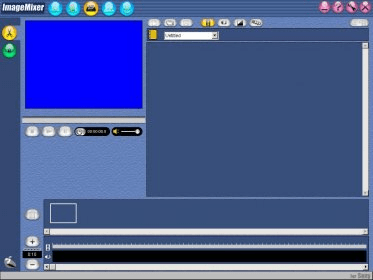

Importing your native module by pulling it off of NativeModules like above is a bit clunky.


Beyond a Calendar Native Module Better Native Module Export
#Image mixer 3 init file how to#
You can read on to learn more about things like what argument types your native module method takes and how to setup callbacks and promises within your native module. Image of iOS logs in FlipperĪt this point you have created an iOS native module and invoked a method on it from JavaScript in your React Native application. You should see your to create an event at name, location) message each time you invoke the native module method. Since you are using RCTLog in the function, you can confirm your native method is being invoked by enabling debug mode in your app and looking at the JS console in Chrome or the mobile app debugger Flipper. You should now be able to invoke your createCalendarEvent() method on your native module in JavaScript. So if you want to test your latest native changes you need to rebuild by using the npx react-native run-ios command. While React Native’s metro bundler can watch for changes in JavaScript and rebuild JS bundle on the fly for you, it will not do so for native code.
#Image mixer 3 init file code#
This is because the code that you are writing sits within the native part of your application. You can invoke the native module inside NewModuleButton's onPress() function.Īs you work through these guides and iterate on your native module, you will need to do a native rebuild of your application to access your most recent changes from JavaScript. Below is an example of a component, NewModuleButton you can add in your app. Test that out by accessing the native module and invoking it’s exported method in JavaScript.įind a place in your application where you would like to add a call to the native module’s createCalendarEvent() method. Test What You Have Built Īt this point you have set up the basic scaffolding for your native module in iOS. For the Google Chrome debugger, React Native runs inside the JS VM in Google Chrome, and communicates asynchronously with the mobile devices via WebSockets. This is because synchronous methods require the JS VM to share memory with the app. Additionally, please note that if you choose to use RCT_EXPORT_BLOCKING_SYNCHRONOUS_METHOD, your app can no longer use the Google Chrome debugger. NSNumber, NSString, NSArray, NSDictionary).Īt the moment, we do not recommend using synchronous methods, since calling methods synchronously can have strong performance penalties and introduce threading-related bugs to your native modules. This means that the hook can only return nil or JSON values (e.g. The return type of this method must be of object type (id) and should be serializable to JSON. Create a new file called RCTCalendarModule.h Image of creating a custom native module file within the same folder as AppDelegate The first step is to create our main custom native module header and implementation files. Xcode is built for iOS development, and using it will help you to quickly resolve smaller errors like code syntax. We recommend using Xcode to write your native code. You can find your iOS project here within a React Native app: Image of where you can find your iOS project To get started, open up the iOS project within your React Native application in Xcode. By the end you will be able to call CalendarModule.createCalendarEvent('Dinner Party', 'My House') from JavaScript, invoking a native method that creates a calendar event. In the following guide you will create a native module, CalendarModule, that will allow you to access Apple's calendar APIs from JavaScript. Please start by reading the Native Modules Intro for an intro to what native modules are. The New Architecture uses Turbo Native Module and Fabric Native Components to achieve similar results. They will be deprecated in the future when the New Architecture will be stable. Native Module and Native Components are our stable technologies used by the legacy architecture.


 0 kommentar(er)
0 kommentar(er)
